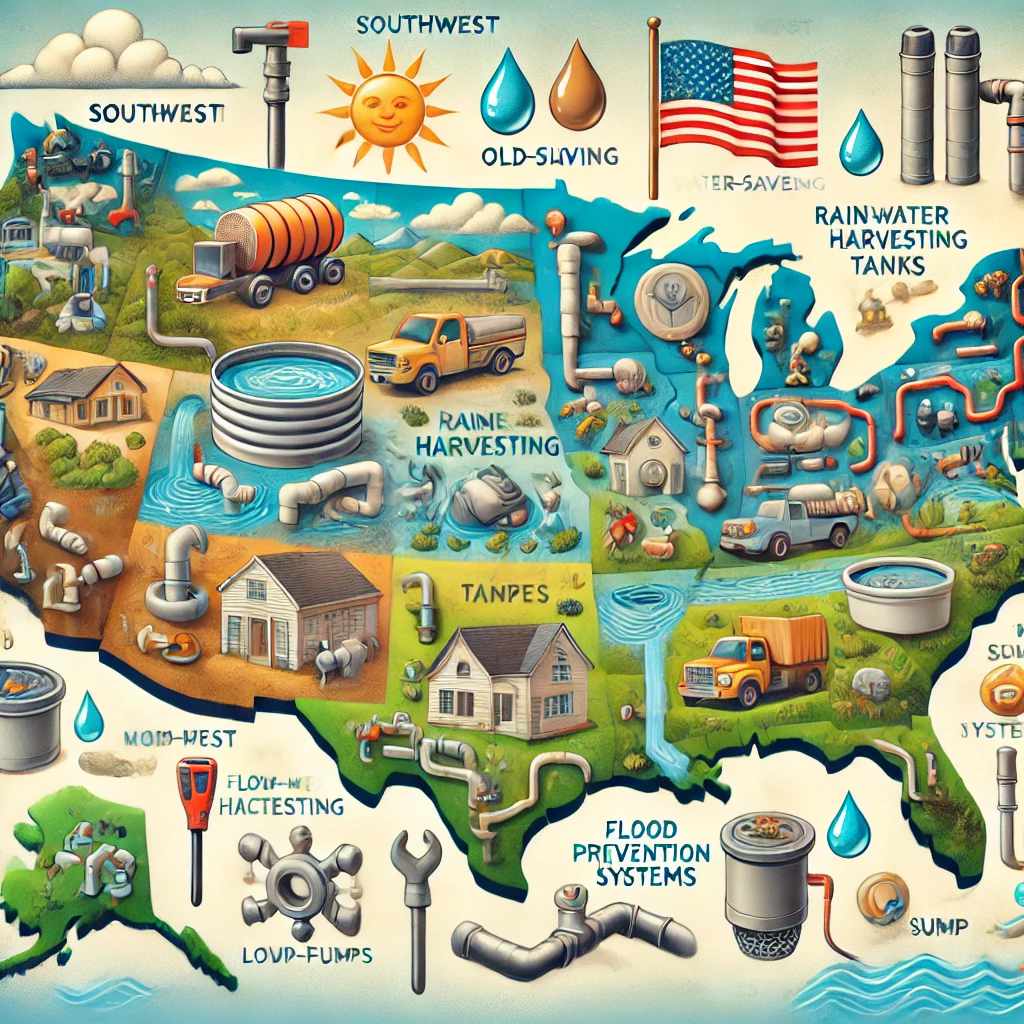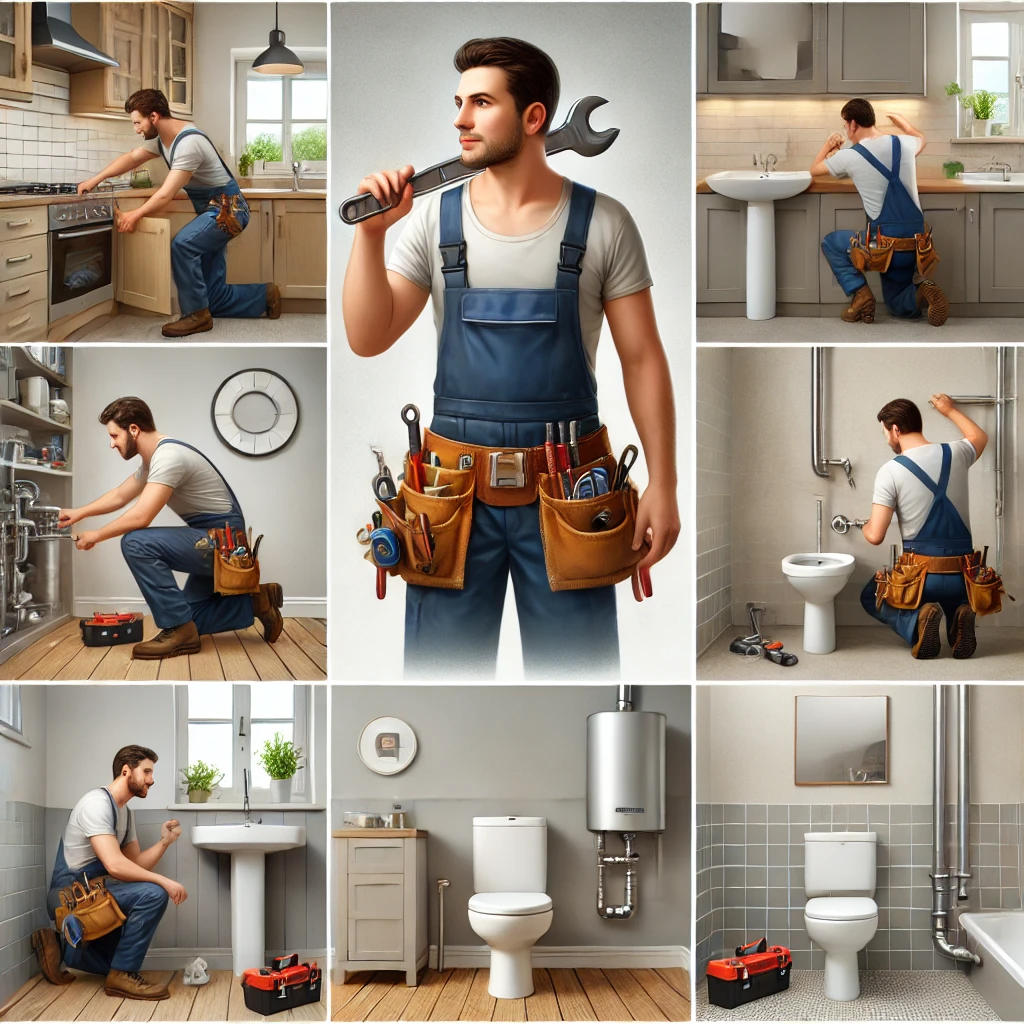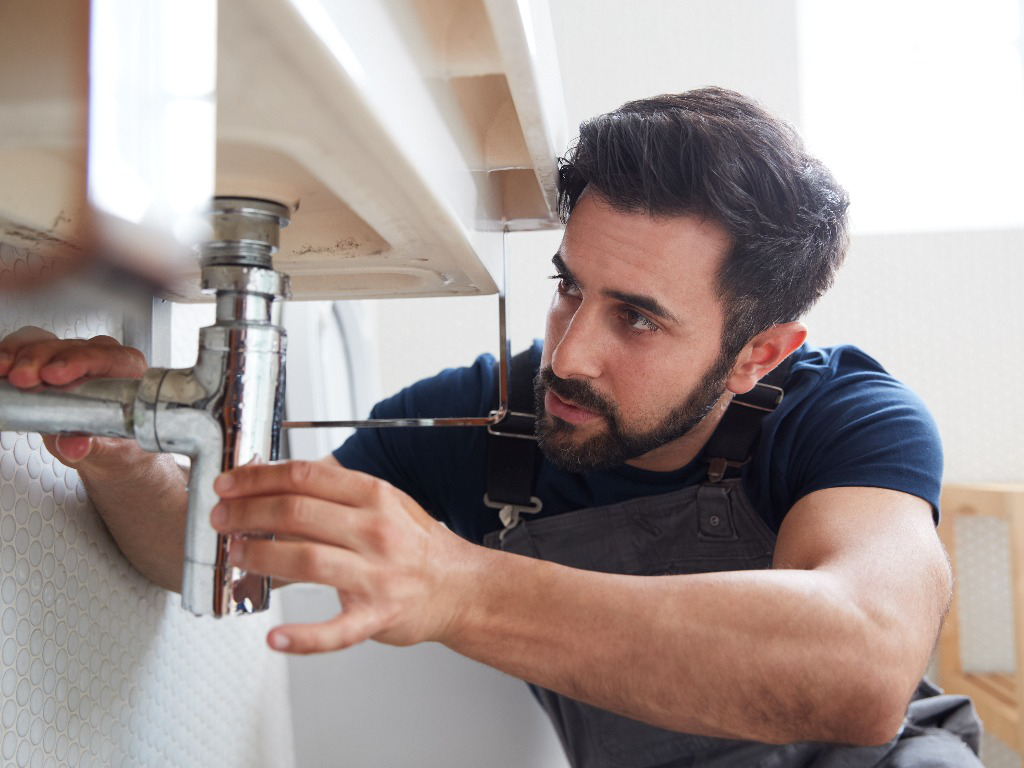The regional plumbing market is expected to grow significantly across the U.S. in 2025, with…

The Future of Plumbing Workforce: Attracting Young Talent and Diversifying the Industry
Did you know that nearly half of today’s tradespeople are set to retire within the next decade? This impending wave of retirements is creating an urgent need for skilled professionals to enter industries like plumbing. The plumbing workforce is pivotal—how contractors attract, train, and retain new talent today will define the industry’s success for years.
Exploring Plumbing Workforce Trends in Trade Careers
For decades, society placed a premium on four-year college degrees, promoting them as the primary path to success. Young people were encouraged to pursue higher education, often overlooking the many rewarding opportunities in skilled trades like plumbing. This narrative painted trade careers as a fallback rather than a first choice despite tradespeople’s critical role in building and maintaining infrastructure.
However, this mindset is shifting dramatically. Rising college tuition costs and the heavy burden of student debt have led many to rethink the traditional degree pathway. Simultaneously, the surging demand for skilled workers in industries like plumbing has highlighted the stability, lucrative earnings, and career advancement these roles offer.
Vocational training programs are increasingly recognized as an innovative, affordable pathway to career success, offering a viable alternative to the debt-heavy route of four-year college degrees. Unlike many college graduates who face years of loan repayments, plumbing apprentices can start earning immediately while gaining valuable, hands-on experience. For example, a young plumbing apprentice builds practical skills and earns a steady income—often without incurring debt. These programs provide structured pathways to licensing and higher wages, ensuring long-term career stability and growth.
This shift drives a cultural reevaluation of trade careers, positioning them as innovative and forward-thinking alternatives to conventional education. Contractors can capitalize on this momentum by developing recruitment strategies highlighting these advantages and offering benefits tailored to modern expectations.
🎧 Listen to the Episode
🌟 Dive into our latest podcast episode where we uncover:
- ✨ Title: Rebuilding the Pipeline: Attracting Young Talent
- ✨ Topics: Strategies for engaging the next generation in construction and trade industries.
- ✨ Why Listen: Discover actionable insights to address workforce shortages and inspire the next generation!
🎙️ Tune in below or on your favorite podcast platform! 🎙️
🎙️ Powered by iHeart Podcasts 📻
The New Appeal of Plumbing for Younger Generations
Today’s plumbers are much more than repair specialists—they are tech-savvy professionals who leverage advanced tools and systems to solve modern challenges. Cutting-edge innovations such as intelligent water systems, eco-friendly plumbing solutions, and digital tools have transformed the trade. These advancements resonate strongly with Millennials and Gen Z, who are drawn to technology-driven careers that align with their values and interests.
The demand for skilled plumbers is soaring, fueled by a booming housing market, aging infrastructure, and ambitious new construction projects. These factors have elevated plumbing to a critical role in modern development, ensuring job security and opportunities for financial stability and career growth.
As the stigma surrounding trade careers fades, more young people are recognizing that plumbing is not just a job—it’s a profession with purpose, growth potential, and real impact. Whether helping homeowners reduce their water usage or contributing to sustainable building projects, plumbers play a vital role in shaping a greener, more efficient future.
Why Trade Careers Are Thriving
Affordability and Quick Career Launch
Vocational training programs provide an accessible and efficient route to success, bypassing the high costs of traditional college degrees. Plumbing apprenticeships, in particular, allow individuals to earn income immediately while learning on the job. These programs combine practical application with formal education, enabling young professionals to develop essential skills and financial stability from the outset. For instance, many apprenticeship programs guide participants toward licensing and higher wages without the financial strain of student loans.
Rising Demand for Skilled Labor
The need for skilled plumbers has never been greater. A surge in housing development, the repair of aging infrastructure, and large-scale construction projects have created an unprecedented demand for qualified tradespeople nationwide. According to recent labor market reports, plumbing is one of the most in-demand trades, with shortages creating lucrative opportunities for job security and career growth. Recruiting new talent has become a critical priority for contractors to meet this growing demand and sustain industry momentum.
Shifting Perceptions of Skilled Trades
For instance, the Plumbing-Heating-Cooling Contractors (PHCC) Association has been instrumental in reshaping the perception of skilled trades through its workforce development initiatives. The PHCC Educational Foundation offers online plumbing and HVACR apprentice courses, providing a non-classroom-based method of instruction recognized by the U.S. Department of Labor.
PHCC Foundation In 2023, the Foundation awarded $139,000 in scholarships to 57 students pursuing careers in plumbing and HVACR, demonstrating its commitment to supporting the next generation of skilled professionals.
PHCC Foundation Additionally, PHCC hosted an Industry Summit, bringing together leaders to discuss workforce solutions and strategies to attract new talent. These initiatives pave the way for a stronger and more sustainable plumbing workforce.
How Contractors Can Leverage This Trend
Engage with Local Schools and Communities
Building solid relationships with local schools and communities is a powerful way to introduce young people to the plumbing trade. Here’s how contractors can take action:
- Attend Career Fairs: Showcase the benefits of plumbing careers with engaging presentations and interactive booths.
- Host Interactive Workshops: Provide hands-on demonstrations of plumbing systems, allowing students to experience the trade firsthand.
- Partner with Schools: Collaborate with high schools to integrate plumbing into vocational training programs or sponsor classroom presentations.
- Set Up Mock Installations: At school events, create plumbing booths with mock pipe setups to highlight the trade’s practical and rewarding aspects.
Offer Competitive Starting Packages
Plumbing companies need to offer more than just a paycheck to attract ambitious young talent. Key strategies include:
- Highlight Apprenticeship Benefits: Promote programs that offer “earn while you learn” opportunities and structured career paths.
- Provide Perks: Include incentives such as tool allowances, health benefits, and certification tuition reimbursement.
- Focus on Career Development: Offer leadership training, regular upskilling opportunities, and clear pathways for career progression.
- Emphasize Stability: Position plumbing as a career with financial security and long-term growth potential.
Promote Success Stories
Inspiring success stories can help reframe plumbing as a respected and rewarding career. Consider these approaches:
Collaborate with Local Media: Feature success stories in blogs, newsletters, or local news outlets to inspire and attract potential recruits.
Highlight Former Apprentices: Share stories of individuals who started as apprentices, advanced to leadership roles, or built their own businesses.
Showcase Real-Life Examples: Create case studies of successful plumbers who achieved financial independence and professional growth.
Leverage Social Media: Share these stories with a broader audience using platforms like Instagram, LinkedIn, and TikTok.
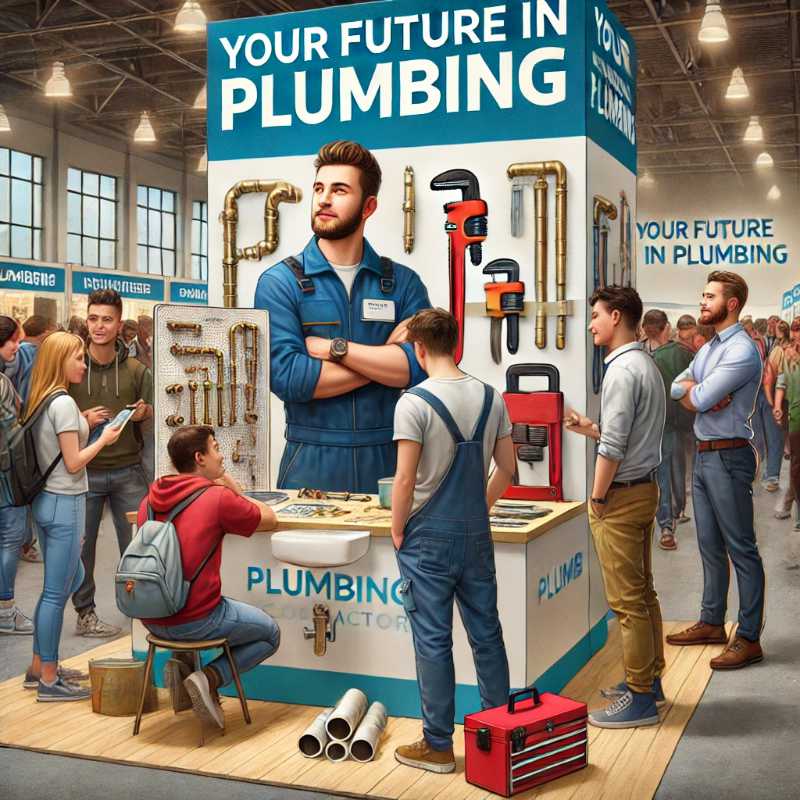
Women and Plumbing Workforce Trends: A Growing Presence
Traditionally seen as male-dominated, the plumbing industry is undergoing a remarkable transformation as more women enter the trade. Once a rarity, women are now embracing plumbing as a viable and rewarding career path, breaking down long-held stereotypes and redefining what it means to succeed in the industry.
This shift is doing more than diversifying the workforce—it’s reshaping how people view the trade. With women bringing unique skills and fresh perspectives to the table, they are proving that plumbing is not about brute strength but about problem-solving, precision, and customer service—qualities that transcend gender. For example, women often excel in areas like communication and attention to detail, which are invaluable when interacting with clients and tackling complex plumbing systems.
In addition, having more women in plumbing is inspiring the next generation. Young girls who might not have considered trades a career option now see role models who demonstrate that plumbing is a space where anyone can thrive. This visibility is critical for challenging outdated notions and encouraging greater inclusivity across the skilled trades.
The benefits of this trend extend beyond individual careers. Research shows that diverse teams are more innovative and effective as they bring a more comprehensive range of ideas and approaches to problem-solving. In plumbing, this can translate to better client service, more creative solutions to technical challenges, and a more collaborative workplace culture.
For the industry, the rise of women in plumbing signals a brighter, more inclusive future. It highlights the potential for growth, innovation, and equality in a trade that has traditionally been overlooked by half the population. By fostering environments that welcome and support women, plumbing companies are not just filling workforce gaps but strengthening the trade for generations to come.
Benefits of Women Entering the Trade
- Fresh Problem-Solving Approaches:
Diverse teams are scientifically proven to outperform homogenous ones. Women often bring unique problem-solving methods and creativity. For instance, a plumbing team tackling a complex retrofitting job may benefit from varied approaches to resource allocation and technical challenges. - Exceptional Customer Service:
Women in trades often excel at communication and empathy, which are key skills when interacting with clients. For example, a customer might feel more comfortable discussing home issues with someone who listens attentively and explains solutions in a relatable manner. - Breaking Stereotypes:
The growing visibility of women in plumbing helps dismantle gender biases, encouraging more young girls to consider the trade as a viable and rewarding career path.
Strategies to Support Women in Plumbing
- Redesign Workplace Culture: Develop anti-harassment policies and foster a zero-tolerance environment for discrimination.
- Provide Resources: Offer childcare options, flexible schedules, and supportive mentorship programs tailored to women.
- Collaborate with Advocacy Groups: Partner with organizations like Women in Plumbing and Tradeswomen Inc. to recruit and retain female talent.
Try SendWork for Free and see why contractors across industries trust it to grow their businesses.
Try SendWork for Free
Bridging the Skills Gap
While the influx of younger talent is encouraging, the industry still faces a knowledge deficit as veteran plumbers retire. Bridging this gap requires strategic investments in training and mentorship.
Challenges of the Skills Gap
Loss of Expertise
Seasoned plumbers carry decades of hands-on experience and problem-solving skills beyond textbook knowledge. From diagnosing complex systems to finding innovative solutions in emergencies, these professionals represent a wealth of expertise that isn’t easily replaced. For example, an experienced plumber might instinctively recognize the signs of a subtle leak or know how to navigate challenging retrofits in older homes. As these veterans retire, their departure creates a knowledge gap that apprentices and newer plumbers may struggle to fill without proper mentorship.
Limited Training Resources
While the demand for skilled plumbers grows, not all companies can provide comprehensive training to prepare young workers for success. Robust apprenticeships require time, resources, and experienced trainers who can offer real-world learning opportunities. Without these, newer entrants may rely solely on theoretical knowledge, leaving them underprepared for the diverse challenges of the trade. For instance, troubleshooting a malfunctioning hot water system in a commercial building requires hands-on experience that classroom instruction alone cannot replicate.
Mismatch in Expectations
Plumbing is often perceived as straightforward work, but the reality is far more complex and physically demanding. Many new entrants may not anticipate the technical expertise required to install modern systems or the stamina needed to work in tight crawl spaces or lift heavy equipment. This mismatch in expectations can lead to disillusionment and, ultimately, higher dropout rates among apprentices. Addressing this requires better pre-career education, setting realistic expectations, and ensuring that younger workers understand the challenges and the rewards of a plumbing career.
Solutions for Contractors
Pair Mentors with Apprentices
One of the most effective ways to bridge the skills gap is by pairing seasoned plumbers with apprentices in formal mentorship programs. These programs allow experienced professionals to pass down critical knowledge, from diagnosing complex issues to mastering industry best practices, through hands-on training in real-world settings. For instance, mentors can teach apprentices to handle unexpected complications on-site or navigate challenging retrofits. Beyond technical skills, mentorship fosters confidence, work ethic, and a sense of belonging, significantly improving retention rates among new workers.
Incorporate Digital Tools
Technology is revolutionizing the plumbing industry’s training and day-to-day operations, offering innovative tools to prepare and empower the workforce.
For instance, virtual reality (VR) training allows apprentices to practice repairing plumbing systems in a risk-free simulated environment. This immersive technology can replicate complex scenarios, such as diagnosing faults in advanced water systems or navigating intricate pipe layouts in commercial buildings. VR is reshaping how skills are taught and retained by providing hands-on experience without the cost or safety risks of live systems.
Beyond training, tools like augmented reality (AR) apps are helping plumbers diagnose and resolve issues in real-time. For example, AR glasses can overlay detailed schematics onto a worksite, guiding technicians through step-by-step repairs.
Smart devices and digital platforms have also transformed everyday plumbing operations. Leak detection sensors, such as the Moen Smart Water Detector, alert plumbers and homeowners to potential water damage before it escalates. Similarly, smart thermostats and connected water heaters allow plumbers to monitor system performance remotely, offering proactive maintenance and improving client satisfaction.
On the business side, scheduling and management software like ServiceTitan streamlines operations by automating tasks such as job scheduling, invoicing, and customer communication. These tools enhance efficiency and provide a seamless experience for plumbers and clients.
Interactive online platforms and mobile apps complement training by offering self-paced learning resources. These platforms include tutorial videos, skill quizzes, and certification trackers that ensure continuous professional development. By integrating these technologies, companies can attract tech-savvy Millennials and Gen Z workers who value innovation and efficiency in their careers.
Offer Career Mapping
To attract and retain top talent, providing clear and compelling career growth opportunities is essential. Career mapping outlines a worker’s potential journey within the company, from entry-level apprentice to master plumber or leadership roles like project manager or business owner. For example, a company might illustrate how completing certifications, supervisory responsibilities, or gaining specialized skills like green plumbing can lead to salary increases and promotions. This transparency helps young workers see plumbing as a long-term, rewarding career rather than just a job, boosting both motivation and loyalty.
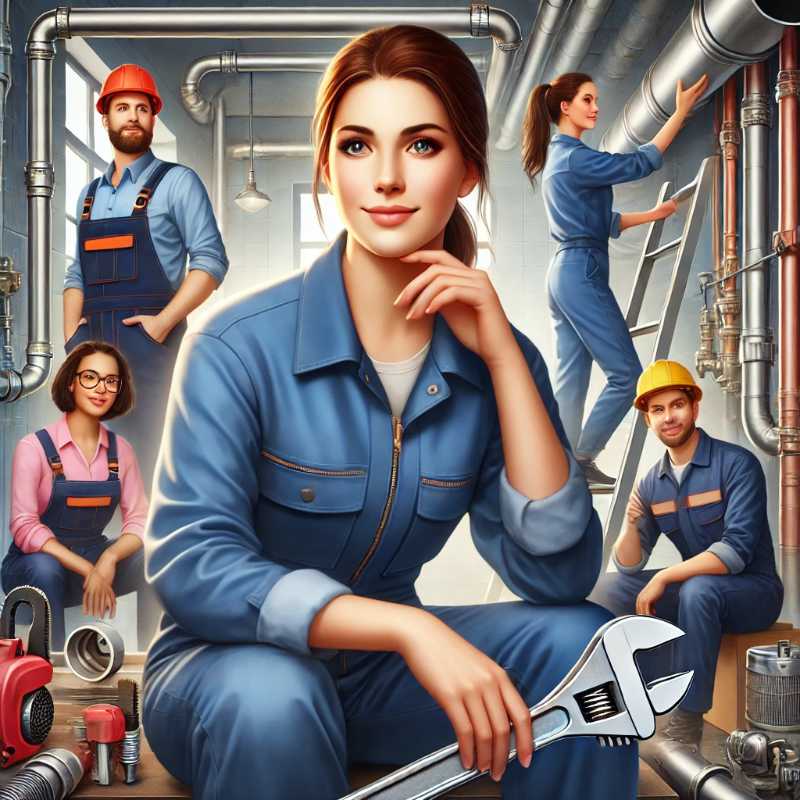
How Plumbing Workforce Trends Are Shaping Young Talent Recruitment
The expectations of younger generations, particularly Millennials and Gen Z, have shifted dramatically from those of their predecessors. Unlike previous generations, who often prioritized job stability and financial security, today’s workers seek more holistic fulfillment in their careers. They value opportunities that provide a paycheck and a sense of purpose, flexibility, and alignment with their personal goals and values.
Work-Life Balance
For younger professionals, work-life balance is non-negotiable. They are less willing to compromise personal time and well-being for career advancement, preferring roles that allow flexibility, manageable workloads, and the ability to disconnect after hours. Plumbing companies offering innovative scheduling solutions—such as four-day workweeks or flexible shifts—can appeal to this growing demand. Fostering a supportive workplace culture that respects boundaries and encourages personal growth is critical to retaining young talent.
Purpose-Driven Careers
Younger generations want their work to make a difference for themselves and the world around them. Careers in plumbing that emphasize eco-friendly practices, like water conservation or green technology, align with these values. Companies highlighting their sustainability efforts—such as installing energy-efficient systems or using environmentally friendly materials—can attract workers motivated by a sense of purpose. This approach draws talent and positions the company as a leader in sustainable practices.
Embracing Technological Innovation
As digital natives, Millennials and Gen Z have grown up with technology at their fingertips. They expect workplaces to leverage modern tools that streamline processes and enhance efficiency. Plumbing could use digital platforms for scheduling and invoicing, employing intelligent leak detection systems, or even incorporating augmented reality (AR) for advanced diagnostics. Companies that embrace these innovations attract tech-savvy workers and gain a competitive edge in the marketplace.
By understanding and adapting to these evolving expectations, plumbing companies can create an environment where younger workers feel valued, motivated, and equipped to thrive.
What Young Workers Value
Millennials and Gen Z workers are redefining workplace expectations, prioritizing continuous learning, flexibility, technological innovation, and purpose-driven work. Plumbing companies that align with these values are more likely to attract and retain top talent.
Continuous Learning and Professional Development
Younger workers thrive in environments that support skill development and career growth. Offering certifications in specialized areas, such as green plumbing or advanced technology, can make a plumbing company stand out.
- Green Plumbing Design (GPD) Certificate Program:
This certification, provided by the American Society of Plumbing Engineers (ASPE) and the International Association of Plumbing and Mechanical Officials (IAPMO), equips professionals with expertise in sustainable plumbing system design. Learn more at ASPE Education. - Advanced Plumbing Technology Diploma:
This program, offered by the Northern Alberta Institute of Technology (NAIT), combines technical training and essential career skills, providing a pathway to apprenticeships. Explore the program at NAIT.
By supporting employees in obtaining these certifications, companies demonstrate a commitment to professional growth and sustainability, resonating deeply with younger generations.
Flexibility and Work-Life Balance
Modern workers value flexibility in their schedules. Plumbing companies that offer options such as four-day workweeks or remote diagnostics roles can meet these expectations while improving employee satisfaction. Flexibility also reduces burnout, making the workplace more appealing to young recruits.
Technology Integration
Raised in a digital-first world, Millennials and Gen Z workers are drawn to companies that embrace innovative tools. Incorporating technologies like:
- Smart Leak Detection Systems
- 3D Plumbing Layout Software
- Mobile Scheduling and Invoicing Apps
…makes day-to-day tasks more efficient and aligns with their tech-savvy nature. Highlighting these advancements can position your company as forward-thinking and attractive to younger talent.
Purpose-Driven Impact
For many young professionals, purpose matters as much as pay. Companies that prioritize sustainability—offering eco-friendly plumbing solutions like water-saving systems and sustainable materials—can appeal to recruits who want to make a difference. Aligning with these values attracts environmentally conscious workers and helps your business stand out to eco-aware clients.
Strategies to Win Over Young Talent
- Host “Tech Days”: Showcase cutting-edge tools and demonstrate how the industry is evolving through technology.
- Prioritize Team Engagement: Regular team-building activities and recognition programs can boost morale and loyalty.
- Embrace Social Media: Use platforms like Instagram and TikTok to highlight plumbing careers’ dynamic, rewarding aspects.

Building a Diverse Team to Adapt to Plumbing Workforce Trends
A diverse workforce is not just a moral imperative—it’s a business advantage. By broadening hiring practices, contractors can unlock untapped potential and better serve their communities.
Benefits of Diversity
- Increased Innovation:
Teams with people from different cultural, educational, and professional backgrounds are better equipped to develop creative solutions. For example, a multilingual team can communicate effectively with non-English-speaking clients, expanding market reach. - Enhanced Customer Relations:
A diverse workforce can connect with a broader client base. Customers might feel more comfortable discussing their needs with a plumber who shares their language or cultural understanding. - Improved Retention Rates:
Companies with inclusive policies experience higher employee satisfaction, reducing turnover and recruitment costs.
Steps Toward Workforce Diversity
- Adopt Blind Hiring Practices: During the initial review, remove personal information from resumes to focus on skills and qualifications.
- Offer Scholarships: Fund vocational training for underrepresented groups to create a pipeline of diverse talent.
- Encourage Community Engagement: Host events or sponsor programs in underserved areas to raise awareness about plumbing careers.
Final Thoughts on Plumbing Workforce Trends
With nearly half of today’s tradespeople set to retire in the next decade, the plumbing industry is at a critical crossroads. This transition presents an unprecedented opportunity to redefine its future by embracing workforce trends prioritizing diversity, sustainability, and innovation. By fostering inclusivity, investing in mentorship, and adapting to the values of younger generations, contractors can build a skilled, resilient, and future-ready workforce.
The plumbing trade is more than just a career—it’s a vital profession that shapes communities and contributes to a more sustainable world. Today’s choices to attract, train, and retain new talent will determine the industry’s success for decades. Let’s seize this moment to build a thriving, impactful, sustainable plumbing workforce together.
